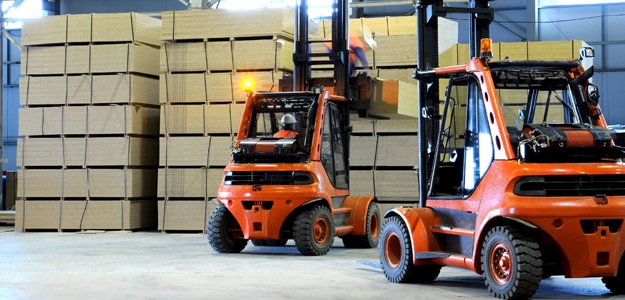Forklift Safety, Training Key to Avoiding Accidents
May 6, 2014 | Staffing Blog

Forklifts are a common sight at industrial plants, retail facilities and warehouses. They may seem innocent enough as they move boxes, crates and other materials from place to place. But like any piece of major equipment, they should only be operated by people who have training and experience.
Almost 100 people died in 2011 from forklift accidents and a lack of training is often to blame. As this article from the National Safety Council points out, forklifts aren’t the same as cars. Motor vehicles have four points of suspension; forklifts have three. That means forklifts can tip over easily. Plus forklifts steer from the rear. So it takes training and practice to learn how to properly and safely maneuver a forklift.
It’s against federal law for anyone under the age of 18 to operate a powered industrial truck – better known as forklifts – and those over the age of 18 must be properly trained and certified to run the forklift.
It’s also important for forklift drivers to watch out for co-workers or other pedestrians who might be walking in their path. Drivers need to ensure they have clear visibility before zipping up a ramp or down an aisle. A pedestrian struck by a forklift can be seriously injured or even killed. These videos shared by Material Handling & Logistics are a sobering reminder of how dangerous forklifts can be.
This is another reason why it’s critical to work with a staffing company that understands forklift safety and regulations. Your company could face a serious liability should a forklift accident or fatality occur at your facility. Regardless of how busy your production schedule is right now, it’s not worth putting just anyone behind the wheel of a forklift.
Work with a staffing company that can provide qualified forklift operators who have the skills and safety training. Then do site-specific training with your temporary employees so they understand your facility.
Make sure you’re stressing forklift safety at the worksite. Don’t set unrealistic deadlines that would encourage forklift drivers to rush in their work. And don’t neglect safety training for drivers and everyone on staff. Even those not operating the forklift should be mindful of the forklifts driving around the worksite and pay attention to walking up ramps or other areas where forklifts being used.
Additional OSHA resources:
- Sample daily checklists for powered industrial trucks
- How to develop a training program for powered industrial truck drivers
- Potential hazards and solutions for powered industrial trucks

